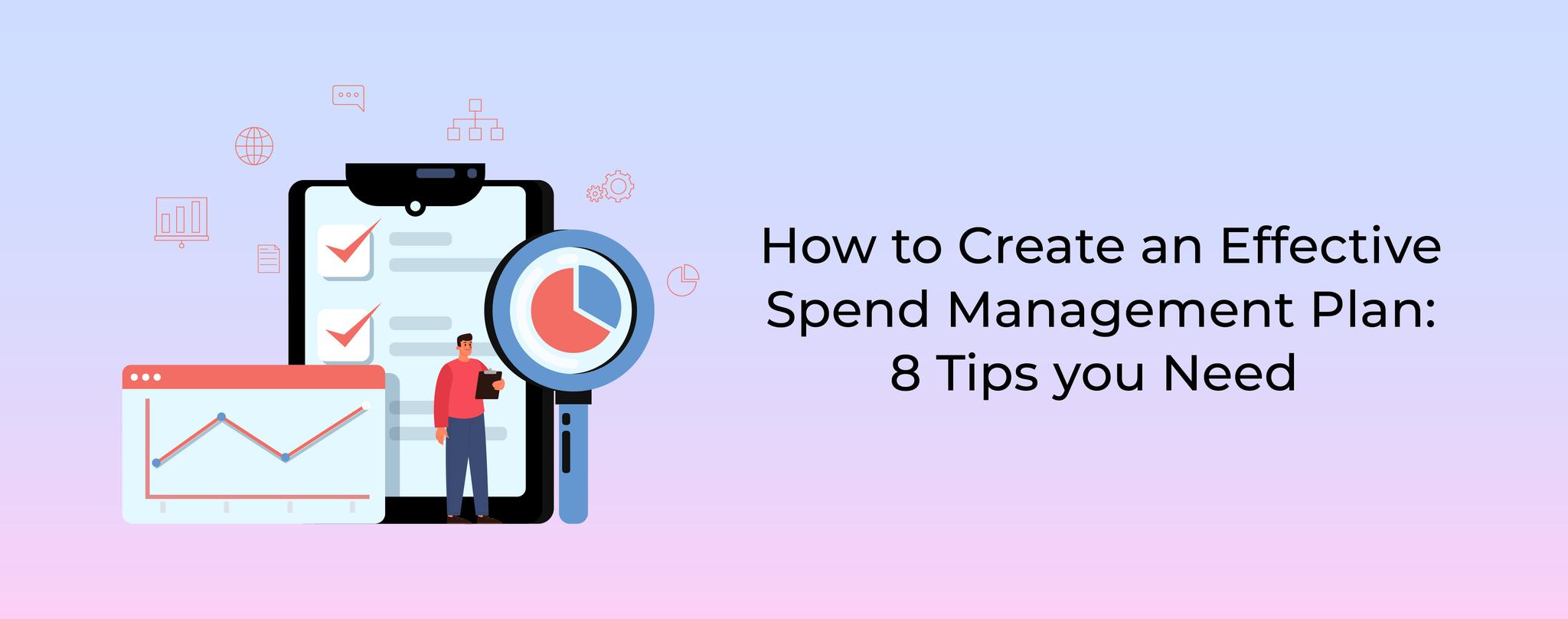
How to Create an Effective Spend Management Plan - 8 Tips you Need
- Spend Management
- 18-May-23
Whether you're an individual, a small business owner, or part of a large corporation, having a well-defined spend management plan can make a significant difference in your business’s financial health. Let’s explore eight essential tips to help you create an effective spend management plan that will optimize your resources and maximize your financial success.
Understand Your Expenses: The first step towards creating a solid spend management plan is to have a comprehensive understanding of your expenses. Analyze your financial records and categorize your expenses into different categories such as fixed costs (rent, utilities), variable costs (marketing, supplies), and discretionary costs (entertainment, travel). This analysis will provide valuable insights into your spending patterns and help identify areas where you can potentially cut costs.
Set Clear Goals: Define your financial goals and objectives. Whether you aim to reduce costs, increase profitability, or invest in new opportunities, having specific and measurable goals will guide your spend management efforts. Clear goals enable you to align your spending decisions with your long-term financial vision and ensure that your resources are utilized effectively.
Prioritize Spending Categories: Not all expenses are created equal. Categorize your spending into high-priority, medium-priority, and low-priority areas. High-priority expenses are essential for your business operations and should be carefully monitored. Medium and low-priority expenses can be evaluated for potential cost-cutting opportunities. By prioritizing your spending categories, you can allocate resources where they are most needed and identify areas where you can adjust without compromising core functions.
Implement Budgeting Techniques: Developing a budget is a fundamental aspect of spend management. Set realistic budgets for each spending category based on historical data and projected growth. Employ techniques such as zero-based budgeting, which requires justifying every expense, or activity-based budgeting, which assigns costs to specific activities within your organization. Regularly monitor your actual spending against the budget and adjust as necessary to ensure you stay on track.
Streamline Procurement Processes: Optimize your procurement processes to maximize cost savings. Consolidate your vendor base and negotiate favorable terms with suppliers. Implement strategic sourcing strategies and explore bulk purchasing options. Consider adopting e-procurement systems and automated purchasing workflows to streamline the procurement process and reduce administrative costs. By improving procurement efficiency, you can unlock significant savings without compromising the quality of goods and services.
Monitor and Control Expenses: Establish a robust system for monitoring and controlling expenses. Implement expense management software or tools to track spending in real-time. Regularly review and analyze expense reports, identify anomalies or excessive spending, and take prompt action to address them. Encourage employees to adhere to spending policies and provide them with clear guidelines for expense reimbursement. Effective expense monitoring and control ensure that your spending remains aligned with your financial objectives.
Foster a Culture of Cost Awareness: Creating a culture of cost awareness within your organization is vital for successful spend management. Educate and empower your employees to make informed spending decisions. Encourage them to identify cost-saving opportunities and reward initiatives that contribute to cost reduction. By fostering a cost-conscious culture, you can tap into the collective intelligence of your workforce and unlock innovative ways to optimize spending.
Continuously Evaluate and Adapt: Spend management is an ongoing process. Regularly evaluate the effectiveness of your spend management plan and adjust as needed. Monitor market trends, technological advancements, and industry best practices to stay ahead of the curve. Embrace change and be open to adopting new cost-saving measures or strategies. By continuously evaluating and adapting your spend management plan, you can maintain financial resilience and drive.